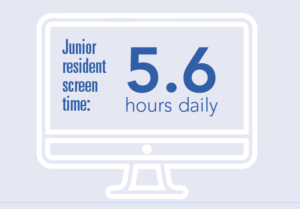
A recent article published in Vascular Specialist summarized data regarding the undeniable relationship between electronic health records (EHRs) and burnout amongst physicians. There is ample irony in the fact that a graph depicting the increased focus on “physician wellbeing” in 2021 is effectively the inverse plot of a graph showing increased utilization of the EHR. Logic would dictate that if physician burnout were a true priority of the system, the first stop on the journey to increasing wellness would be developing an EHR that is usable for physicians and designed primarily for patient care rather than billing.
The EHR was sold to physicians as a tool to optimize workflow when in actuality it is a tool for billing. As a tool for billing, EHRs generally perform well—and therein lies the real problem. Billing is an inefficient and arduous process, requiring clinically irrelevant and superfluous documentation by insurance companies and governmental agencies, and based on clinically irrelevant guidelines. This results in direct patient care being consumed by computer work, causing reduced physician job satisfaction and increased burnout.
Work-life balance is destroyed when weekends, holidays and nights are devoted to catching up on notes and answering menial, but billable, clinical documentation queries.
Regardless of career stage, EHRs impact physicians equally: Junior residents are now spending up to 5.6 hours in front of the computer daily while attendings spend up to 49% of their workday staring at the computer. Even more disconcerting is that U.S. clinicians have a greater EHR burden than any other developed country, something lawmakers and the health system should be considering while simultaneously advocating physician wellness.
Now that the relationship between EHR and burnout has been so clearly established, the next step in taking care of physician wellness should stem from making government-level changes to billing to allow the EHR burden to decrease. It should take fewer clicks than it currently does to prove a doctor did what he or she claimed to have done for a patient.
One such change has been revising the codes for office evaluation and management (E/M) visits. The 2021 office E/M visit codes (99202–99205 and 99211–99215) underwent their first substantial revision since being implemented in 1992. The reasons and goals for the changes are multifold, but focused on reducing the administrative burden of hollow documentation. In addition, payments were revised to be resource-based and achieve payment parity amongst specialties (i.e., shift payments from physicians who perform procedures to physicians who perform E/M services).
The primary revision was the elimination of specific history and physical exam (H&P) requirements to requiring “medically necessary” H&P. The new guidelines now allow providers to select the level of code based on Medical Decision Making (MDM) or time. MDM elements have not changed, but the definitions have been widely revised. The level one new-patient office visit code has been deleted. Coding based on time requires detailed documentation of the face-to-face and nonface-to-face time related to patient care only on the day of service.
Unfortunately, your local Medicare Administrative Contractor (MAC) may or may not be following the guidelines as published by CPT and accepted by CMS. Private payors are not obligated to follow the new CPT guidelines at all. While all other E/M codes (e.g., inpatient visits, discharge management) are unchanged for 2021, these codes are currently going through similar review.
Doctors and other healthcare practitioners are burning out at an increasing rate and we know why. It behooves us to do something concrete to decrease rates of burnout by attacking the absurdity of the demands of EHRs and poor usability full-force. The SVS is committed to working, through its Government Relations, Political Action and Coding committees and all its advocacy efforts, to ensure that our voices are heard on the national stage.
Anahita Dua, MD, and Patrick Ryan, MD, are members of the SVS Government Relations Committee.












